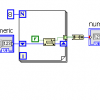-
Posts
240 -
Joined
-
Last visited
-
Days Won
7
Content Type
Profiles
Forums
Downloads
Gallery
Everything posted by Gribo
-
I hope you know about this: http://sc2.sourceforge.net/
-

Need help: want to build a real-time GPS tracker for multiple movers
Gribo replied to Aristos Queue's topic in Hardware
It depends on what sort of peripherals and how many events/hour you require. A unit which reports once a day can last years on a single LiSOCl AA battery, on the other side, a smartphone which has its transceiver and CPU always on lasts a day or so. -

Need help: want to build a real-time GPS tracker for multiple movers
Gribo replied to Aristos Queue's topic in Hardware
They are expansive, however, I can ask regarding some of our older, unsupported products, since your requirements are relatively simple. -

Need help: want to build a real-time GPS tracker for multiple movers
Gribo replied to Aristos Queue's topic in Hardware
RTLS systems can be quite expansive, especially with these requirements. I work for a company which makes such systems, indoor/outdoor location, sensors and relay outputs, LCD on the agents, GUI and even a LV API. We have used the system in the past to track workers in a construction site. You can check us out at http://www.precysetech.com Another company is Aeroscout, which can use the wifi infrastructure for their active tags access points. Their main market is health care (tracking equipment in a hospital). -
You use the system exec.vi under the connectivity palette to run the AVRDUDE.
-

[CR] LabView <-> google maps websocket interface
Gribo replied to Gribo's topic in Code Repository (Uncertified)
Version 1 was uploaded. It has all the features I wanted, that is, a bi-directional interface between a standard browser and a LabView application. There are still scale-ability issues, which will require a more capable messaging library (0MQ is my prime candidate). -
You need few packages, OpenG and JSON Labview, both available from the code repository here, or better yet, via the VIPM.
-
Check out the LabView <-> google maps code on the code repository. It translates LV variants to Google maps JSON objects, and sends them via web socket to a browser. You can easily draw a polygon wherever you want with those VIs. Edit: Here is the link: http://lavag.org/files/file/236-labview-google-maps-websocket-interface/
-
File exit keyboard shortcut is Alt + F, and X usually. Without a menu option, it is Alt +F4 (Windows and some linux distros) which is a bit harder to press with the left hand. This can be either good or bad, depending on the application.
-
Also, if the device's MAC address is known, you can use arp or netsh to map an ip address to that machine.This requires administrator privileges in windows.
-
What sort of device is it? Some vendors have their own auto config protocols.
-
If you use windows, there are examples in the Labview help on how to use the Excel ActiveX control, You can use different worksheets without much effort. These examples also show how to fill a range of cells with a variant, which provide an elegant solution to your problem.
-
Hello, I have stopped supporting this code, please use the web socket one, for better functionality. I have only tested the .NET VIs under windows XP 32 bit with LV2011, and didnt manage to recreate this error.
-
-
Name: LabView <-> google maps websocket interface Submitter: Gribo Submitted: 29 Dec 2013 Category: *Uncertified* LabVIEW Version: 2012 License Type: GNU Public A simple bi-directional interface between Labview and Google maps, using Websocket. See readme.txt for instructions. Click here to download this file
-
Should I create a new entry into the un-certified repository? It will make it easier to update the file.
-
Hello, Following my previous attempt with Google maps, Here is a websocket based link between LV and Google maps. Websocket class by S.Marlow http://evexiallc.com/index.php JSON API by drjdpowell Javascripts and demo application are based on the Webpanel demo application. Instructions: 1. Obtain a Google maps API key. 2. Edit the WP_Googlemaps.html and add the key to the relevant script tag. 3. Start the demo vi (google maps demo.vi) 4. Open the WP_Googlemaps.html with a modern browser. I have tested it with Chrome and Safari on iPhone 4. You might have to point to the correct path of some VIs, they are included in the vi directory. gmaps_websockets_LV2013.zip
-
Title says it all.. I can edit my own posts in other forums.
-
You need to get your own Google maps API key, it is free. You are not supposed to share it with others. Also, this http://lavag.org/topic/17870-lv-google-maps-via-web-sockets/ The API key string is located in the HTML document.
-
The diagram clean up button. No one else will have a 'Make code look nice' button. I wish I had it in other parts of my life...
-
The 0.7 update was posted. This tool is useful for a proof of concept only, to show geo spatial information generated from LV. The Javascript side of the project needs some more work (Paths, better JSON support).
-
This is a dead end code. Websockets are the future. I will post the last update next week.



